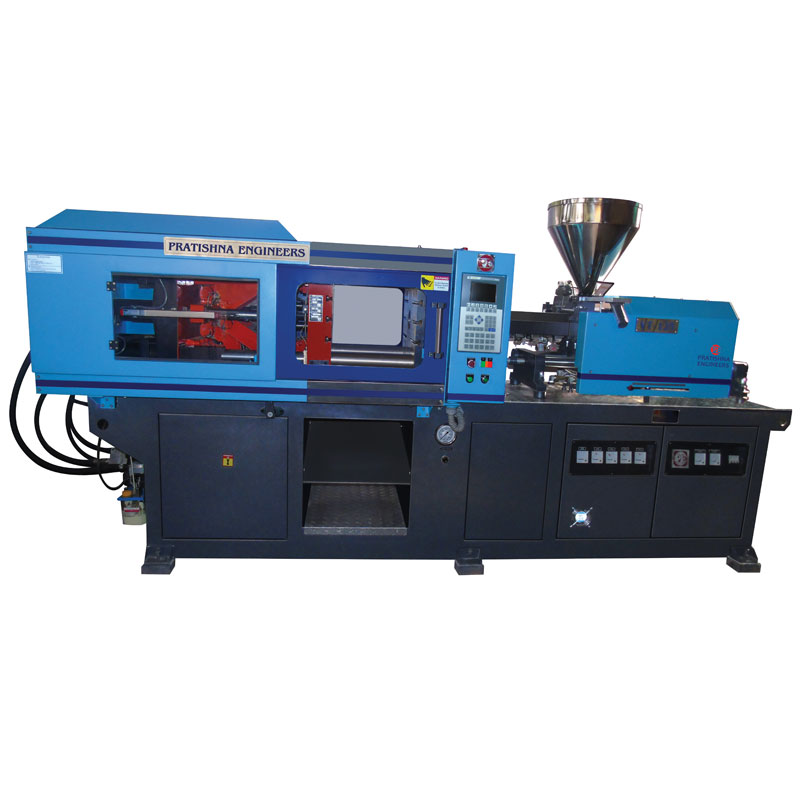Horizontal injection moulding machines have become the cornerstone of modern manufacturing, delivering unparalleled efficiency, precision, and scalability. At Pratishna Engineers, a leading manufacturer and supplier based in Mumbai, India, these machines are designed to revolutionize plastic component production. By leveraging cutting-edge technology, these machines minimize waste, enhance part quality, and accelerate production cycles, making them a top choice for industries worldwide.
In this blog, we will explore how horizontal injection moulding machines outperform alternatives, the benefits they offer, and why they are indispensable in today’s competitive market.
Key Benefits of Horizontal Injection Moulding Machines
- Improved Part Quality
Horizontal injection moulding machines utilize gravity to guide molten plastic evenly into the mould cavity. This minimizes air entrapment and defects like sink marks, ensuring consistent filling and higher-quality parts. They are particularly suited for producing large components or parts with intricate features.
- Faster Cycle Times
These machines streamline production cycles by optimizing the plastic flow and cooling phases. With each cycle taking only 15 to 120 seconds, manufacturers can achieve higher throughput and reduced lead times.
- Reduced Material Waste
Horizontal machines minimize air pockets during moulding, allowing for precise material usage. This reduces the amount of plastic required per part and decreases overall waste.
- Ease of Part Removal
Gravity assists in ejecting parts from the mould cavity in horizontal machines, simplifying the removal process. This reduces manual handling and contributes to faster operations.
- Ideal for Large and Complex Parts
With the ability to manage larger plastic volumes and intricate designs, these machines are perfect for manufacturing complex components across automotive, medical, and electronics industries.
Vertical vs. Horizontal Injection Moulding Machines
While both vertical and horizontal injection moulding machines have their merits, horizontal machines excel in several key areas. Here is a comparison:
| Feature | Horizontal Machines | Vertical Machines |
| Orientation | Mould halves move horizontally. | Mould halves move vertically. |
| Best Use Cases | High-volume production and cylindrical designs. | Insert moulding and concurrent operations. |
| Material Flow | Gravity aids in consistent material flow and cooling. | Gravity supports holding inserts during moulding. |
| Production Footprint | Requires more floor space. | Compact design, ideal for smaller spaces. |
| Cost Efficiency | Lower cost per part for large production volumes. | Cost-effective for specialized designs. |
Applications of Horizontal Injection Moulding Machines
Horizontal injection moulding machines are versatile and serve diverse industries, including:
- Automotive: Producing interior panels, door handles, and bumpers.
- Medical: Manufacturing syringes, IV components, and surgical instruments.
- Consumer Electronics: Crafting smartphone cases, laptop components, and electronic casings.
- Packaging: Creating durable plastic containers and lids for food and beverages.
Factors to Consider for Maximum Efficiency
- Mold Design
An optimized mould design ensures even cooling and minimizes potential issues such as uneven flow or defects.
- Material Selection
Choosing the appropriate plastic material affects flow properties, strength, and durability. Options range from polypropylene (PP) to high-performance engineering plastics.
- Machine Capabilities
Ensure the machine’s clamping force and injection capacity align with the size and complexity of the intended parts.
- Automation and Process Control
Incorporating robotics and process control systems enhances consistency and productivity, particularly in high-volume production.
How to Optimize Productivity in Injection Moulding
- Optimize Product Design: Use simple geometric forms to minimize material usage and reduce cycle times.
- Automate Processes: Automation reduces variability and accelerates operations, improving overall efficiency.
- Regular Maintenance: Calibrate and maintain equipment to prevent downtime and ensure precision.
- Implement Lean Manufacturing: Streamline workflows to cut waste and increase productivity.
Why Choose Pratishna Engineers for Horizontal Injection Moulding Machines?
Pratishna Engineers is a trusted name in manufacturing horizontal injection moulding machines that cater to diverse industrial requirements. With state-of-the-art designs and advanced features, our machines deliver exceptional performance. Whether you need machines for high-volume production or specialized applications, our comprehensive range has you covered.
Explore Our Product Range:
- Horizontal Injection Moulding Machines
- Vertical Injection Moulding Machines
- PET Injection Moulding Machines
- Special Purpose Injection Moulding Machines
- PHM Series Two-Platen Injection Moulding Machines
- Applications of Injection Moulding Machines
- Video Gallery
- Contact Us
Frequently Asked Questions (FAQs)
Q1: What are the advantages of horizontal injection moulding machines?
Horizontal machines offer faster production cycles, improved part quality, reduced material waste, and easy part removal, making them ideal for large-scale manufacturing.
Q2: When should I choose horizontal over vertical injection moulding?
Choose horizontal moulding for high-volume production, cylindrical parts, or when automation and gravity-assisted part removal are essential. Vertical moulding is better for insert moulding and concurrent operations.
Q3: How do horizontal machines support automation?
They integrate seamlessly with injection robots, conveyor systems, and other automation tools to enhance productivity and reduce manual intervention.
For more information or to explore our range of machines, visit Pratishna Engineers.

